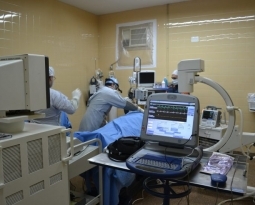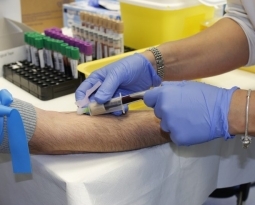Arizona Patent of the Month – April 2024
SynCardia Systems, LLC has been granted a patent for a next generation total artificial heart system that is poised to revolutionize cardiac care. This innovative system boasts a set of features designed to provide life-saving support to patients in need of advanced cardiac intervention.
At the heart – pun intended – of this technology are the artificial ventricles, meticulously crafted to seamlessly integrate into the patient’s cardiovascular system. These ventricles are strategically coupled to key components such as pulmonary arteries and heart chambers, ensuring optimal functionality within the chest cavity.
Driving this system forward is a sophisticated drive system powered by electric motors. These motors, equipped with stator assemblies and rotorcams, orchestrate the expansion and contraction of the artificial ventricles with unparalleled precision. The rotational speed of the rotorcams inversely correlates with the magnitude of ventricle expansion, offering customizable support tailored to each patient’s needs.
To ensure reliable operation, SynCardia’s total artificial heart system features robust power supplies meticulously engineered to sustain the demands of cardiac function. Whether through external or mobile power supplies, these systems provide continuous energy to drive the electric motors, offering patients a lifeline they can depend on.
SynCardia’s commitment to patient well-being extends beyond functionality, with innovative features designed to enhance user experience and streamline care. Diaphragms ensure airtight separation between blood and internal components, promoting safety and reliability. Additionally, integrated electronic devices equipped with display screens and communication modules empower patients and healthcare providers with real-time data, fostering informed decision-making and personalized care plans.
Calibrating this advanced system is made simple through intuitive methods designed to optimize performance and ensure patient safety. By leveraging Hall sensors and monitoring offset adjustments, SynCardia’s total artificial heart system achieves unparalleled accuracy and reliability.
Are you developing new technology for an existing application? Did you know your development work could be eligible for the R&D Tax Credit and you can receive up to 14% back on your expenses? Even if your development isn’t successful your work may still qualify for R&D credits (i.e. you don’t need to have a patent to qualify). To find out more, please contact a Swanson Reed R&D Specialist today or check out our free online eligibility test.
Who We Are:
Swanson Reed is one of the U.S.’ largest Specialist R&D tax advisory firms. We manage all facets of the R&D tax credit program, from claim preparation and audit compliance to claim disputes.
Swanson Reed regularly hosts free webinars and provides free IRS CE and CPE credits for CPAs. For more information please visit us at www.swansonreed.com/webinars or contact your usual Swanson Reed representative.

















